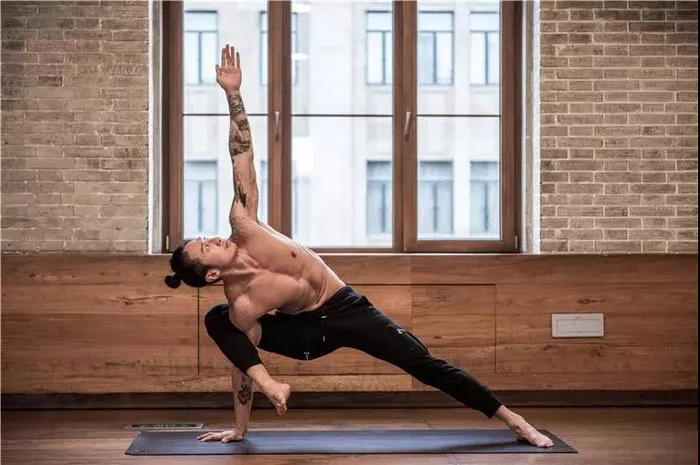Yoga is not just a physical practice—it is a holistic journey of self-awareness, discipline, and transformation. The postures (asanas) we practice on the mat are deeply connected to ancient philosophy and symbolism, which has profound impacts on our physical, mental, and spiritual well-being. Among the many asanas practiced in yoga, the Eagle Pose, or Garudasana, stands out as a powerful and symbolic posture that can teach us about balance, strength, focus, and overcoming challenges.
In this article, we will explore the Eagle Pose in-depth, its symbolism in yoga, the physical and mental benefits it offers, and how it can be integrated into daily life to deepen one’s yoga practice and understanding of self.
What is the Eagle Pose?
The Eagle Pose, or Garudasana in Sanskrit, is a standing balance posture that involves entwining the arms and legs while maintaining a steady gaze and a deep breath. The name “Garudasana” comes from the word “Garuda,” which refers to the mythical bird in Hindu and Buddhist traditions. Garuda is known as the mount of Lord Vishnu and symbolizes both freedom and power, as well as the ability to transcend the limitations of the body and mind.
The pose is typically performed in standing sequences, where one leg is bent and lifted while the other wraps around it, and both arms are crossed and wrapped around each other. The gaze is focused forward, or sometimes, depending on the variation, up to the hands or down at a steady point to help maintain balance.
Symbolism of the Eagle Pose
The Eagle Pose is rich in symbolism. In many ways, it represents the balance between the physical, mental, and spiritual aspects of yoga, calling upon several key themes to explore. These include:
1. Balance
In the Eagle Pose, balance is central, both physically and symbolically. The act of balancing on one leg, with the arms and legs wrapped around each other, encourages you to find your center. It’s a posture that requires mental clarity and concentration. Just as the eagle can soar above the earth while maintaining precise control over its movements, the Eagle Pose calls upon the practitioner to find a deep sense of balance, both in the body and mind.
This balancing act teaches us to remain centered in the face of distractions, instability, and difficulty, much like navigating the challenges of daily life. It invites you to embrace the chaos while maintaining composure—an important lesson that can be translated to the spiritual journey of self-mastery.
2. Strength and Power
Garuda, the bird for which the pose is named, is a powerful creature that embodies strength and independence. The Eagle Pose mimics the grace and might of the eagle in flight. To hold the posture, you must engage your core, legs, and arms, building both muscular strength and endurance.
Beyond the physical strength, Garudasana symbolizes inner power—the power to overcome obstacles, fears, and limitations. In yoga, physical postures help us access and develop inner strength. The pose also reminds us of the transformative power of yoga. Through dedication to the practice, we develop not only physical strength but also the resilience and courage to face life’s challenges with determination.
3. Flexibility and Adaptability
The Eagle Pose asks for both physical flexibility in the body and mental adaptability in the mind. The twisting and crossing of the arms and legs can be challenging, requiring flexibility in the joints and muscles. At the same time, the posture challenges the mind to remain calm and focused, especially when balance is hard to maintain.
In life, adaptability and flexibility are crucial. The Eagle Pose symbolizes the need to be flexible with one’s approach to challenges and to adapt to changing circumstances with grace and poise. It teaches us that by maintaining fluidity in our actions, thoughts, and attitudes, we can soar above difficulties rather than becoming trapped by them.
4. Focus and Concentration
When performing Garudasana, focus is key. A slight shift in concentration can cause a loss of balance and lead to falling out of the pose. The eagle, in many cultures, is a symbol of sharp focus and heightened perception, allowing it to spot prey from great distances. Similarly, in this asana, the practitioner must channel their energy and attention toward the present moment, cultivating deep concentration.
This aspect of the Eagle Pose is particularly symbolic of yoga’s broader teachings on mindfulness and attention. To truly succeed in yoga, we must bring full awareness to each movement and each breath. The Eagle Pose, therefore, symbolizes the importance of maintaining a clear, focused mind in every aspect of life.
5. Freedom and Liberation
The eagle, in many mythologies, is a symbol of freedom. It represents the ability to rise above earthly limitations, to soar in the sky without constraint. In the practice of yoga, this symbolism is translated into the concept of liberation from the attachments and distractions that bind us.
Garudasana challenges the practitioner to move past their ego, fears, and limitations to rise into a space of true freedom. As you hold the pose and face the challenge of balancing, you are also facing your inner limitations. As you begin to let go of self-doubt and fear of failure, you liberate yourself, just as the eagle breaks free from the constraints of gravity.
Physical Benefits of the Eagle Pose
Garudasana offers numerous physical benefits, many of which contribute to overall health and well-being. Some of these include:
1. Improved Balance and Coordination
The Eagle Pose is a great exercise for enhancing balance and coordination, as it requires stability while twisting and balancing on one leg. Holding the pose engages the core and lower body muscles, building strength and control.
2. Strengthens Leg Muscles
The position of the legs in Garudasana—one leg bent while the other is wrapped around it—works the thighs, calves, and ankles. This strengthens the muscles in the lower body and improves overall lower body strength.
3. Opens the Hips and Shoulders
The wrapping of the legs and arms helps open up the hips and shoulders, which can relieve tension and increase flexibility in these areas. For those who sit for long periods or experience tightness in these regions, the Eagle Pose provides a counter-stretch that can help alleviate discomfort.
4. Stimulates Circulation
The compression and release of the limbs in the Eagle Pose stimulate circulation throughout the body. By improving blood flow, this pose can help nourish the muscles and organs, facilitating detoxification and improved overall health.
5. Enhances Posture
As Garudasana requires the practitioner to engage the core and align the spine, it naturally improves posture. Regular practice of this pose can help to correct poor posture habits, leading to a stronger and more aligned body.
Mental and Emotional Benefits
While the physical benefits of the Eagle Pose are evident, the mental and emotional benefits are equally profound. The practice of yoga, and particularly challenging poses like Garudasana, helps cultivate a mindset of mindfulness, patience, and resilience.
1. Cultivates Patience
The Eagle Pose challenges you to remain calm and composed, even when it feels difficult. This patience extends beyond the mat, teaching you how to handle difficult situations with greater ease. The more you practice patience in the pose, the more you can bring this quality into your daily life.
2. Improves Focus and Clarity
Focusing on a fixed point while holding the Eagle Pose sharpens the mind and improves concentration. This enhanced mental clarity can help you stay focused in other aspects of your life, leading to better decision-making and reduced stress.
3. Reduces Stress
Balancing poses like Garudasana help activate the parasympathetic nervous system, which is responsible for relaxation. By practicing mindfulness and controlled breathing in the pose, you can reduce stress and anxiety levels. This emotional calmness allows you to stay grounded during difficult situations.
4. Builds Confidence
As you master the balance and alignment of the Eagle Pose, your sense of self-confidence grows. The pose teaches you that with practice and persistence, you can overcome challenges. This confidence boosts self-esteem and reinforces the belief that you are capable of facing life’s obstacles.
Integrating the Eagle Pose Into Your Daily Life
While Garudasana is a powerful pose in itself, its symbolism extends beyond the mat. To integrate the lessons of the Eagle Pose into daily life, one must approach challenges with a clear focus, a sense of balance, and a mindset of strength and adaptability.
1. Mindful Presence
Incorporating the mindfulness aspect of the Eagle Pose into everyday activities will help you develop greater presence. Whether you’re working, interacting with others, or simply walking, try to bring the same level of awareness and focus you practice in Garudasana.
2. Overcoming Challenges
Use the strength and focus developed in this pose to tackle obstacles that arise in your life. Just as you balance and adjust in the pose, take a step back in challenging situations to assess and adapt your approach.
3. Physical Conditioning
Incorporating standing balance postures like Garudasana into your daily practice can help maintain flexibility, strength, and balance in your body, making it easier to face daily tasks and navigate physical challenges with ease.
Conclusion
The Eagle Pose, or Garudasana, is far more than just a physical asana—it is a deeply symbolic practice that teaches balance, strength, flexibility, and concentration. It encourages us to embrace challenges, overcome limitations, and tap into the vast power within ourselves. By embodying the symbolism of the eagle—its strength, focus, and freedom—we not only deepen our physical yoga practice but also integrate these qualities into our everyday lives, moving forward with greater clarity, confidence, and resilience.
As you continue to practice Garudasana, let the eagle’s spirit guide you, reminding you that within you lies the strength and freedom to soar to new heights.
Related Topics:





















